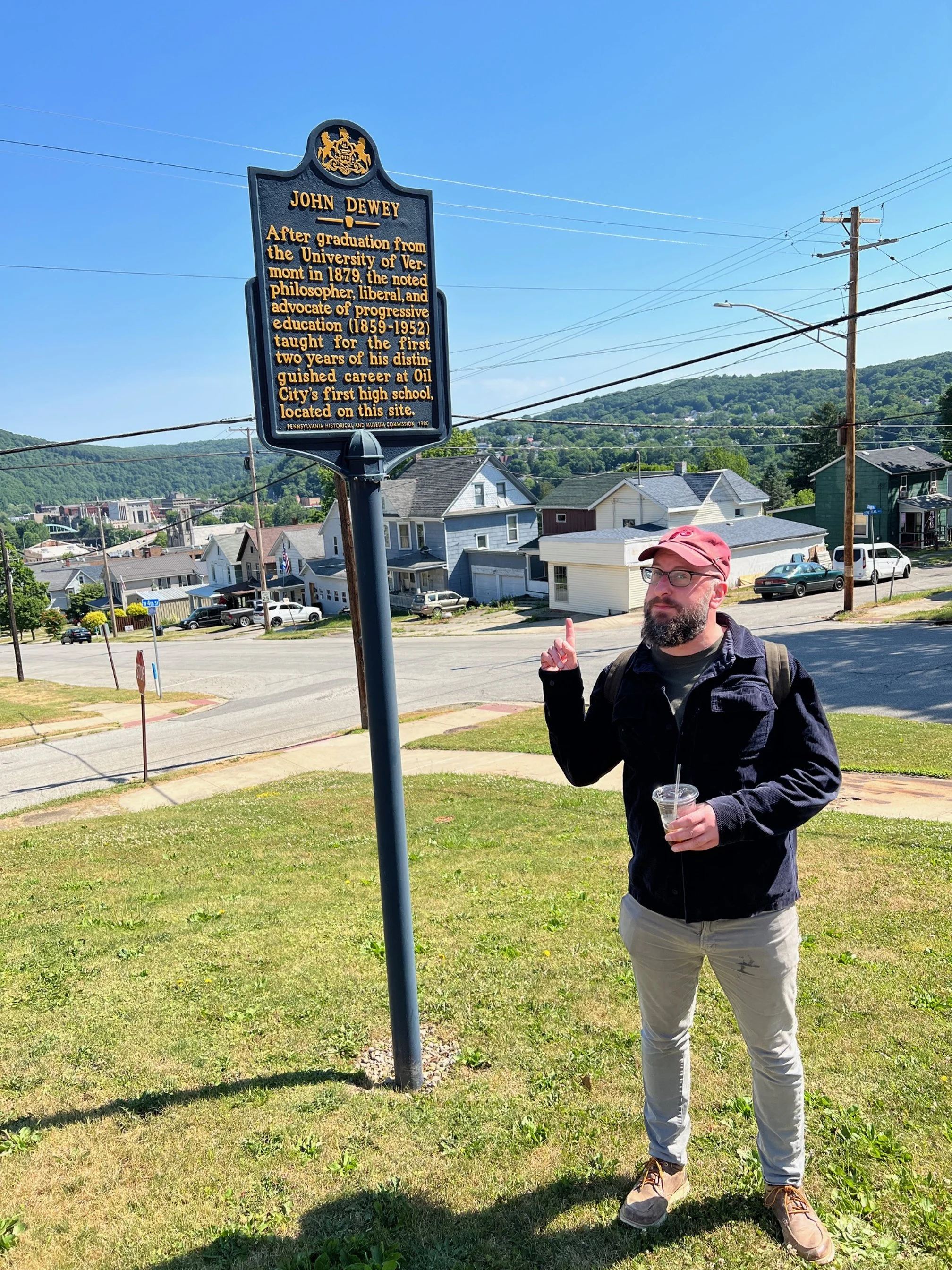John Dewey
John Dewey has followed me for a long time.
I first came to understand him as a “misapplied seer” in the writing of Ken Macrorie, a compositional theorist I studied while at Syracuse University. As an undergraduate, I also read his most famous book, Democracy & Education in a philosophy of Education class, where Dewey was situated in a lineage with Rousseau, Freire and hooks.
Later on I went to a graduate school where my colleague Pete Hocking introduced us to the work of Maxine Greene (an intellectual descendant of Dewey), and continually challenged students and faculty on their commitment to a Deweyan practice.
As a new teacher I discovered Jackson Kytle’s To Want to Learn, a book that includes the charge to read Dewey’s Experience & Education once a year. I came to see a direct connection between Deweyan ideas and adult learning, the type of work I was doing at the time. For adult students (really all students and instructional design models), “growth,” as Dewey reminds us, “depends upon the presence of difficulty, to be over come by the exercise of intelligence”
Finally, as a doctoral student, I again returned to Dewey, especially his Art & Experience, where the sequencing of experiences helped me think about the development of teaching identity.
With this book project I was excited to look more fully at Dewey as a person, existing in the world and among other thinkers. I read a lot of work about him, for sure. But I also held some of his actual letters, and walked in some of the places he walked - including this hill in Oil City where he had his first professional experience teaching.
